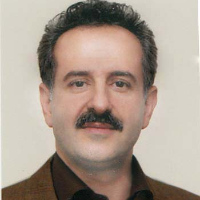Rhodamine B Dye Removal from Aqueous Solutions Using Poly(N-vinylpyrrolidone-co-maleic anhydride)/Rice Husk Biocompatible Nanocomposite: Isothermal, Kinetics and Thermodynamic Studies
Author(s):
Article Type:
Research/Original Article (دارای رتبه معتبر)
Abstract:
Hypothesis: Currently, the dyes/heavy metal ions contamination of wastewater is the most important environmental problem throughout the world. Up to now, many techniques such as ion exchange, precipitation, adsorption, and membrane processes have been employed to remove dyes/heavy metal ions from water. Among them, adsorption is a simple and inexpensive technique for the removal of dye contaminations. The aim of the current work is the development of a low cost material based on hydrolyzed poly(N-vinylpyrrolidone-co- maleic anhydride) and rice husk as an effective adsorbent for Rhodamine B (RB) removal. The adsorption studies on the synthesized nanocomposite were carried out under different conditions, including, pH of solution, contact time, nanocomposite dosages and initial dye concentrations. Furthermore, the kinetic and thermodynamic studies of the adsorption data were examined.
Findings: The prepared nanocomposite was characterized by FTIR, XRD, SEM and TGA. The SEM images showed that the nanocomposite had a particle size between 50-100 nm and the XRD patterns revealed an amorphous structure. The results demonstrated that more than 88% of RB was removed by a nanocomposite synthesized under the conditions of pH 8, 70 mg adsorbent, 40 mg/L dye concentration and 180 min contact time. Furthermore, the experimental data showed a good agreement with Freundlich isotherm and pseudo-second order kinetic models.
Methods
Hydrolyzed poly(N-vinylpyrrolidone-co-maleic anhydride)/rice husk nanocomposite was prepared by a two-step method. In the first step, the poly (N- vinylpyrrolidone-co-maleic anhydride)/rice husk nanocomposite was synthesized through in-situ radical polymerization technique using benzoyl peroxide as initiator. In the second step, the hydrolyzed poly(N-vinylpyrrolidone-co-maleic anhydride) /rice husk nanocomposite was prepared through hydrolysis using sodium hydroxide solution (2 N).Findings: The prepared nanocomposite was characterized by FTIR, XRD, SEM and TGA. The SEM images showed that the nanocomposite had a particle size between 50-100 nm and the XRD patterns revealed an amorphous structure. The results demonstrated that more than 88% of RB was removed by a nanocomposite synthesized under the conditions of pH 8, 70 mg adsorbent, 40 mg/L dye concentration and 180 min contact time. Furthermore, the experimental data showed a good agreement with Freundlich isotherm and pseudo-second order kinetic models.
Language:
Persian
Published:
Iranian Journal of Polymer Science and Technology, Volume:31 Issue: 1, 2018
Pages:
81 to 92
https://magiran.com/p1832003
مقالات دیگری از این نویسنده (گان)
-
Construction, characterization and properties investigation of polyaniline different nanostructures in acidic ionic liquids media based on imidazole and pyridine
Ehsan Nazarzadeh Zare *, Moslem Mansour Lakouraj, Aref Ashna
Journal of Applied Chemistry Today, -
An Environmentally Friendly Super-Adsorbent Nanocomposite Based on Poly (N- Vinylpyrrolidone -Co- Maleic Anhydride) and Its Application for Congo Red Dye Removal from Aqueous Solutions
E. Nazarzadeh Zare*, M. Mansour Lakouraj, M. Masoumi
Journal of Color Science and Technology,



